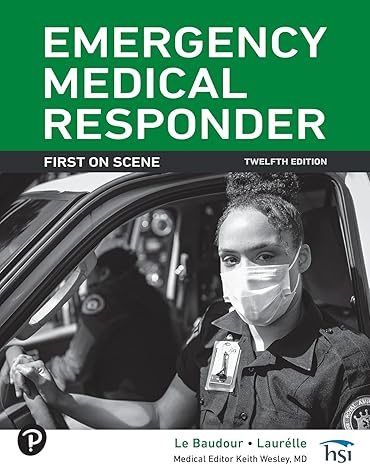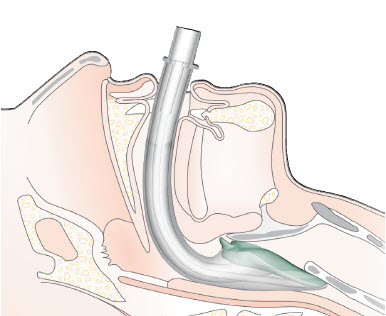Course categories
Skip available courses
Available courses
SALT triage is a system used in mass casualty incidents to sort and prioritize patients based on the severity of their injuries and the likelihood of survival. The goal is to ensure that limited medical resources are used as effectively as possible.
This course is an introduction to the Region 5 Hostile MCI Protocol and to the Rescue Task Force concept. The information in this course was developed by Western Michigan University Homer Stryker MD School of Medicine's Division of EMS and Disaster Medicine on behalf of the Region 5 Medical Control Authority Network, the 5th District Medical Response Coalition, and the Region 5 Homeland Security Planning Board. The intended audience for this course is licensed EMS personnel as well as law enforcement personnel. The course is ideally designed to be complemented with hands-on training and periodic multi-disciplinary exercises.
Draw Up Epi for all EMS license levels in Region 5
- Teacher: Brian Bell
PDR Instruction Sheet for EMS
This course is an introduction to the Region 5 Hostile MCI Protocol and to the Rescue Task Force concept. The information in this course was developed by Western Michigan University Homer Stryker MD School of Medicine's Division of EMS and Disaster Medicine on behalf of the Region 5 Medical Control Authority Network, the 5th District Medical Response Coalition, and the Region 5 Homeland Security Planning Board. The intended audience for this course is licensed EMS personnel as well as law enforcement personnel. The course is ideally designed to be complemented with hands-on training and periodic multi-disciplinary exercises.
This course will provide an overview and orientation to the CPR2 Small BVM.
This course is intended for providers at the MFR and Basic license level.
The course includes an interactive Lesson, BVM Orientation Video and a Course Evaluation.
Upon completion, a Certificate of Completion/CE Chit Sheet will be provided.
This course will provide an overview and orientation to the CPR2 Small BVM.
This course is intended for providers at the MFR and Basic license level.
The course includes an interactive Lesson, BVM Orientation Video and a Course Evaluation.
Upon completion, a Certificate of Completion/CE Chit Sheet will be provided.
EMS frequently encounters patients that are in extremis and quickly deteriorating to the point of cardiac arrest, often while packaging and loading these patients.
It is important to rapidly recognize the deteriorating patient and take immediate action where you encounter the patient to stabilize the condition before loading and transporting. The following timeline provides a prioritization of the goal directed treatments to stabilize the patient and prevent deterioration.
This online training module provides the didactic training material for the i-gel airway.
Completion of each section of the lesson is required in order to advance through the entire lesson to completion.
Once completed, you will be eligible to attend the hand on training session for i-gel airway use at your agency/department.
- Teacher: Chris Mantels
- Teacher: Keone Bareng
- Teacher: Ryan Cronk
- Teacher: Robert Hess
- Teacher: Markie McGowan
Welcome to the Cyanide and CyanoKit refresher course for Allegan Co EMS Providers.
This course will provide an overview and orientation to the CPR2 Small BVM.
This course is intended for providers at the MFR and Basic license level.
The course includes an interactive Lesson, BVM Orientation Video and a Course Evaluation.
Upon completion, a Certificate of Completion/CE Chit Sheet will be provided.
This course will provide an overview and orientation to the CPR2 Small BVM.
This course is intended for providers at the MFR and Basic license level.
The course includes an interactive Lesson, BVM Orientation Video and a Course Evaluation.
Upon completion, a Certificate of Completion/CE Chit Sheet will be provided.
This course is an introduction to the Region 5 Hostile MCI Protocol and to the Rescue Task Force concept. The information in this course was developed by Western Michigan University Homer Stryker MD School of Medicine's Division of EMS and Disaster Medicine on behalf of the Region 5 Medical Control Authority Network, the 5th District Medical Response Coalition, and the Region 5 Homeland Security Planning Board. The intended audience for this course is licensed EMS personnel as well as law enforcement personnel. The course is ideally designed to be complemented with hands-on training and periodic multi-disciplinary exercises.
This course will provide an overview and orientation to the CPR2 Small BVM.
This course is intended for providers at the MFR and Basic license level.
The course includes an interactive Lesson, BVM Orientation Video and a Course Evaluation.
Upon completion, a Certificate of Completion/CE Chit Sheet will be provided.
This course will provide an overview and orientation to the CPR2 Small BVM.
This course is intended for providers at the MFR and Basic license level.
The course includes an interactive Lesson, BVM Orientation Video and a Course Evaluation.
Upon completion, a Certificate of Completion/CE Chit Sheet will be provided.
This course will provide paramedics in the Berrien County MCA the required training to administer Cyanokits in the field.
- Teacher: Jonathan Beyer
- Teacher: Robert Hale
- Teacher: Josh Kay
- Teacher: Brian Scribner
This course is education component for Berrien County MCA Protocol 8-15-1. The protocol is designed to allow paramedics to perform inter-facility transports with an expanded set of medications running in the IV.
- Teacher: Jonathan Beyer
- Teacher: Josh Kay
- Teacher: Chris Milligan
- Teacher: Brian Scribner
This course has been developed to provide base level education on the 2017 Berrien County EMS Protocol set.
- Teacher: Jonathan Beyer
- Teacher: Bob Hale
- Teacher: Brian Scribner
This course has been developed to provide base level education on the 2017 Berrien County EMS Protocol set.
- Teacher: Jonathan Beyer
- Teacher: Bob Hale
- Teacher: Brian Scribner
This course will provide an overview and orientation to the CPR2 Small BVM.
This course is intended for providers at the MFR and Basic license level.
The course includes an interactive Lesson, BVM Orientation Video and a Course Evaluation.
Upon completion, a Certificate of Completion/CE Chit Sheet will be provided.
This course will provide an overview and orientation to the CPR2 Small BVM.
This course is intended for providers at the MFR and Basic license level.
The course includes an interactive Lesson, BVM Orientation Video and a Course Evaluation.
Upon completion, a Certificate of Completion/CE Chit Sheet will be provided.
Training module for Calhoun County EMS Narcan Leave Behind Program in conjunction with the COPE Network
Draw Up Epi for all EMS license levels in Region 5
Welcome to the Cyanide Exposure and CyanoKit training course for Calhoun Co EMS Providers.
Didactic training for i gel Airway
Applicable for all license levels
The lesson and agency affiliation section must be completed to gain certificate of completion
Print and Save your Certificate of Completion, it is also your CE CHIT sheet
This course will provide an overview and orientation to the CPR2 Small BVM.
This course is intended for providers at the MFR and Basic license level.
The course includes an interactive Lesson, BVM Orientation Video and a Course Evaluation.
Upon completion, a Certificate of Completion/CE Chit Sheet will be provided.
This course will provide an overview and orientation to the CPR2 Small BVM.
This course is intended for providers at the MFR and Basic license level.
The course includes an interactive Lesson, BVM Orientation Video and a Course Evaluation.
Upon completion, a Certificate of Completion/CE Chit Sheet will be provided.
This course will provide an overview and orientation to the CPR2 Small BVM.
This course is intended for providers at the MFR and Basic license level.
The course includes an interactive Lesson, BVM Orientation Video and a Course Evaluation.
Upon completion, a Certificate of Completion/CE Chit Sheet will be provided.
This course will provide an overview and orientation to the CPR2 Small BVM.
This course is intended for providers at the MFR and Basic license level.
The course includes an interactive Lesson, BVM Orientation Video and a Course Evaluation.
Upon completion, a Certificate of Completion/CE Chit Sheet will be provided.
This course will provide an overview and orientation to the CPR2 Small BVM.
This course is intended for providers at the MFR and Basic license level.
The course includes an interactive Lesson, BVM Orientation Video and a Course Evaluation.
Upon completion, a Certificate of Completion/CE Chit Sheet will be provided.
This course will provide an overview and orientation to the CPR2 Small BVM.
This course is intended for providers at the MFR and Basic license level.
The course includes an interactive Lesson, BVM Orientation Video and a Course Evaluation.
Upon completion, a Certificate of Completion/CE Chit Sheet will be provided.
Training module for Calhoun County EMS Narcan Leave Behind Program in conjunction with the COPE Network
- Teacher: Alvin Miles
- Teacher: Taylor Whisman
- Teacher: Alvin Miles
- Teacher: Jeromy Robertson
- Teacher: Shawn Smith
- Teacher: Taylor Whisman
This course will provide an overview and orientation to the CPR2 Small BVM.
This course is intended for providers at the MFR and Basic license level.
The course includes an interactive Lesson, BVM Orientation Video and a Course Evaluation.
Upon completion, a Certificate of Completion/CE Chit Sheet will be provided.
This online training module provides the didactic training material for the i-gel airway.
Completion of each section of the lesson is required in order to advance through the entire lesson to completion.
Once completed, you will be eligible to attend the hand on training session for i-gel airway use at your agency/department.
- Teacher: Christina Benson
- Teacher: JC Robertson
- Teacher: Jeromy Robertson
This course is an introduction to the Region 5 Hostile MCI Protocol and to the Rescue Task Force concept. The information in this course was developed by Western Michigan University Homer Stryker MD School of Medicine's Division of EMS and Disaster Medicine on behalf of the Region 5 Medical Control Authority Network, the 5th District Medical Response Coalition, and the Region 5 Homeland Security Planning Board. The intended audience for this course is licensed EMS personnel as well as law enforcement personnel. The course is ideally designed to be complemented with hands-on training and periodic multi-disciplinary exercises.
- Teacher: Alvin Miles
- Teacher: Shawn Smith
This course is intended to introduce the FAST-VAN Stroke Assessment adopted for use in Southwest Michigan Region 5. This assessment builds upon the Cincinnati Prehospital Stroke Scale (CPSS) which has long been successfully used to screen for strokes in the prehospital setting. We will continue to use the CPSS as the initial part of a new 2-part process and begin referring to the CPSS as "FAST" in reference to the components of the CPSS: Face, Arm, Speech, Time. We will now be adding an additional compoent to our stroke assessment called the VAN Stroke Screen, a tool used to screen for a sub-set of the most severe strokes known as large vessel occlusions (LVO). We believe the use of this new stroke assessment tool will help EMS practitioners quickly identify patients having strokes, in general, but especially those having LVO strokes. Early identification of LVO strokes may include bypassing closer hospitals to take the patient directly to a facility with specialized neuro-interventional capabilities based on local medical control authority protocols and/or direct medical control consultation. It also can be used to alert the receiving emergency department to allow them to better prepare to receive and care for the patient.

- Teacher: Brian Bell
- Teacher: Chris Fouch
- Teacher: Sara Morales
Didactic training for i gel Airway
Applicable for all license levels
The lesson and agency affiliation section must be completed to gain certificate of completion
Print and Save your Certificate of Completion, it is also your CE CHIT sheet
This course is an introduction to the Region 5 Hostile MCI Protocol and to the Rescue Task Force concept. The information in this course was developed by Western Michigan University Homer Stryker MD School of Medicine's Division of EMS and Disaster Medicine on behalf of the Region 5 Medical Control Authority Network, the 5th District Medical Response Coalition, and the Region 5 Homeland Security Planning Board. The intended audience for this course is licensed EMS personnel as well as law enforcement personnel. The course is ideally designed to be complemented with hands-on training and periodic multi-disciplinary exercises.
- Teacher: Chris Fouch
This course will provide an overview and orientation to the CPR2 Small BVM.
This course is intended for providers at the MFR and Basic license level.
The course includes an interactive Lesson, BVM Orientation Video and a Course Evaluation.
Upon completion, a Certificate of Completion/CE Chit Sheet will be provided.
- Teacher: Brian Bell
This course will provide an overview and orientation to the CPR2 Small BVM.
This course is intended for providers at the MFR and Basic license level.
The course includes an interactive Lesson, BVM Orientation Video and a Course Evaluation.
Upon completion, a Certificate of Completion/CE Chit Sheet will be provided.
- Teacher: Brian Bell
- Teacher: Chris Fouch
- Teacher: Sara Morales
- Teacher: Brian Bell
- Teacher: Chris Fouch
- Teacher: Sara Morales
SAM Splint Pelvic Sling Training for KCMCA
- Teacher: Brian Bell
- Teacher: Chris Fouch
- Teacher: Sara Morales
This course is intended to introduce the FAST-VAN Stroke Assessment adopted for use in Southwest Michigan Region 5. This assessment builds upon the Cincinnati Prehospital Stroke Scale (CPSS) which has long been successfully used to screen for strokes in the prehospital setting. We will continue to use the CPSS as the initial part of a new 2-part process and begin referring to the CPSS as "FAST" in reference to the components of the CPSS: Face, Arm, Speech, Time. We will now be adding an additional compoent to our stroke assessment called the VAN Stroke Screen, a tool used to screen for a sub-set of the most severe strokes known as large vessel occlusions (LVO). We believe the use of this new stroke assessment tool will help EMS practitioners quickly identify patients having strokes, in general, but especially those having LVO strokes. Early identification of LVO strokes may include bypassing closer hospitals to take the patient directly to a facility with specialized neuro-interventional capabilities based on local medical control authority protocols and/or direct medical control consultation. It also can be used to alert the receiving emergency department to allow them to better prepare to receive and care for the patient.
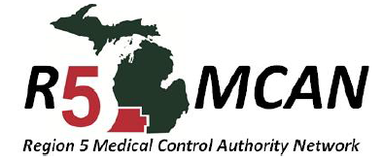
This course is an introduction to the Region 5 Hostile MCI Protocol and to the Rescue Task Force concept. The information in this course was developed by Western Michigan University Homer Stryker MD School of Medicine's Division of EMS and Disaster Medicine on behalf of the Region 5 Medical Control Authority Network, the 5th District Medical Response Coalition, and the Region 5 Homeland Security Planning Board. The intended audience for this course is licensed EMS personnel as well as law enforcement personnel. The course is ideally designed to be complemented with hands-on training and periodic multi-disciplinary exercises.
- Teacher: Stephen Godfrey
- Teacher: Steven Joyce
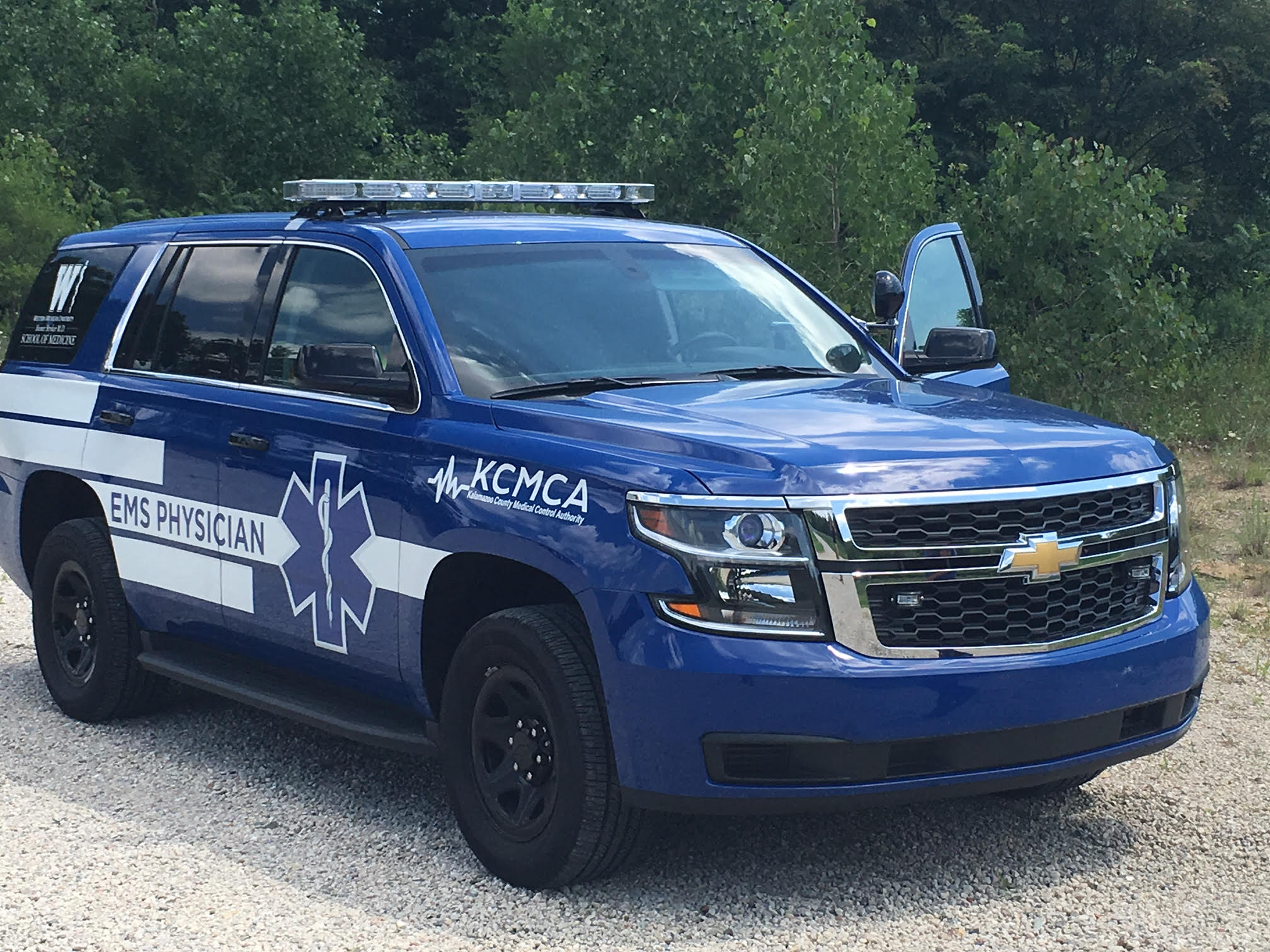
Welcome to the WMed EMS Elective in Kalamazoo, MI!
This elective offers students the opportunity to learn about and experience pre-hospital and disaster medicine through a series of structured didactic sessions and hands-on field experiences. This elective is made possible by several partnerships: Wmed Department of Emergency Medicine Division of EMS, Kalamazoo County Medical Control Authority, Kalamazoo County Fire Departments, Kalamazoo County 911 Dispatch, and ambulance services of Life, PrideCare, and LifeCare.
EMS is a relatively new specialty in the house of medicine, becoming an ABEM Boarded subspecialty in September 2010 with the first certification exam administered in 2013. The Kalamazoo County EMS system is a high-performance single tier ALS system with countywide BLS first responders. Serving a population of a quarter million, the EMS system is made up of four ambulance services covering designated areas of the county and sixteen first responder agencies – fire departments and public safety.
The two-week curriculum is broken into 2 topic blocks, including history of ems and introduction to medical direction and system design. The four-week curriculum is broken into 4 topic blocks, including history of ems, introduction to medical direction and system design, quality improvement and finance, and special ops. The NAEMSP textbook and online FEMA resources will be utilized. Students will ride along with our physician-staffed medical support unit, spend time with a fire department and ambulance agency, and observe emergency call taking and dispatching at a 911 and ems dispatch center. Additionally depending on which weeks the elective encompasses, students will participate in monthly local and regional meetings, weekly ems didactics and emergency medicine grand rounds, monthly sim lab, and monthly ems case review. The course concludes with a written exam based on the topic blocks and a written course evaluation. The course readings, exam, and evaluation will be available through an online learning platform, moodle. Students may work ahead on assignments. Course faculty include Wmed EMS Fellowship faculty/fellows.
Director: Joshua Mastenbrook MD
Department: Emergency Medicine
Coordinator: Christina Benson
Telephone number: 269-337-6600
Email address: Christina.benson@med.wmich.edu
Blocks available: November - April. The 2-week elective starts on the 1st Monday of each month. The 4-week elective starts on the 1st Monday of each month. See Rotation schedule for details. Each block starts on a Monday and ends on a Friday.
- Teacher: Steven Joyce
- Teacher: Joshua Mastenbrook
- Teacher: K Weber
This is the online component of the Acute Contrast Reactions and Emergencies in Radiology Course. It is intended to serve as preparation for the hands-on simulation-based component that will follow.
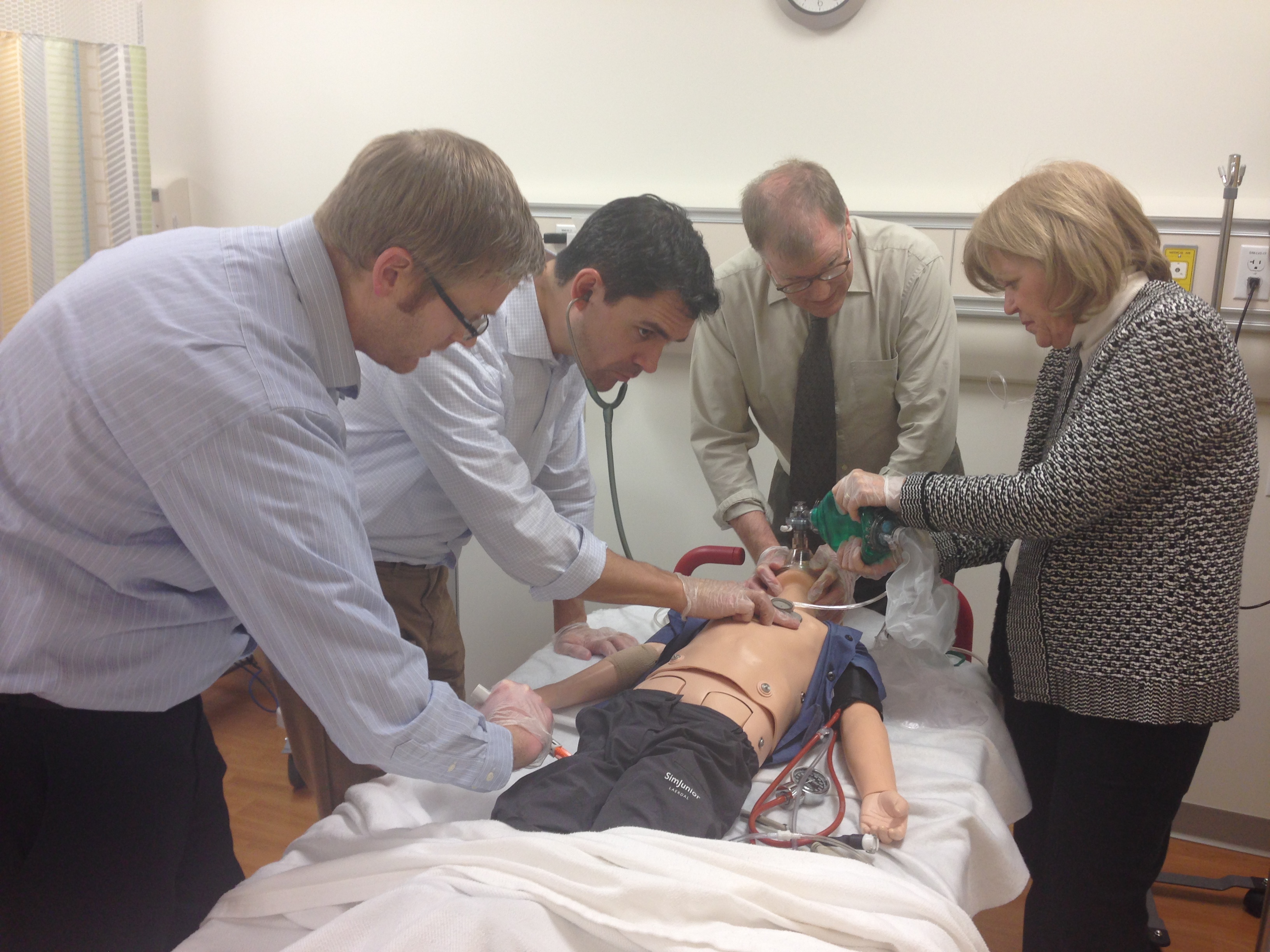
Please take this quiz before attending Animal Lab. You must continue to
take the quiz until you get 100%. Send your results to the office so
they can be included in your file.
Please take this quiz before attending Animal Lab. You must continue to take the quiz until you get 100%. Send your results to the office so they can be included in your file.
Welcome to the Medical Support Unit (MSU-1) Course for WMed residents and EMS fellows. The course is intended to provide a foundation for residents starting on MSU-1 as well as to serve as a refresher for experienced MSU-1 residents and fellows. The course is organized in various modules and is intended to be self-paced (within reason). For the most part, the modules can be completed sequentially or non-sequentially based on your interest in the topics. Some modules might be more important than others to do earlier in the course as you begin to rotate onto MSU-1 for your orientation shifts. Some modules include links and instructions to access other online courses that must be completed. These may require you to upload a copy of a course completion certificate.
Before staffing MSU-1 by yourself, you must satisfactorily complete all course modules and key competencies, including the final written exam. We believe the the MSU-1 Program is a great opportunity for our residents and will make you a better emergency physician. However, with this opportunity there is substantial responsibility. We hope that you enjoy this course and, more importantly, the course helps you get the best possible experience from the MSU-1 Program.
- Teacher: Michael Bentley
- Teacher: William Fales
- Teacher: Steven Joyce
- Teacher: Joshua Mastenbrook
Welcome to the WMed EMS Fellowship Course. Here you will find a number of educational resources, links to the fellowship calendar and textbooks, weekly reading tasks and quizzes.
*****
Faculty:
Joshua Mastenbrook MD - Program Director
Craig Dieringer MA, EMT-P - Program Coordinator
William Fales MD - KCMCA Medical Director
John Hoyle MD
William Selde MD
Stephanie Van Alsten MD
Mike Bentley MPA, EMT-P
Judy Wheeler MPM, EMT-P
*****
From ABEM:
"The Emergency Medical Services (EMS) fellowship is designed to provide physicians with proficiency in managing the breadth of clinical conditions and operational aspects encountered by EMS systems in non-traditional healthcare settings. Specifically, these encounters involve patients of all ages with the broadest possible spectrum of emergency illnesses and injuries. Emphasis is placed on initial identification and treatment of emergency conditions with limited resources in uncontrolled circumstances. Specific procedural skills necessary for patient stabilization and clinical practice are also integrated into training. Examples of such training that differentiates it from general emergency medicine residency training include patient extrication from accident scenes, airway management and use of advanced airway devices in challenging settings, use of spinal motion restriction devices in injured patients, application of lower extremity traction devices, and field triage. Further comparison between The Core Content of EMS Medicine and The Model of the Clinical Practice of Emergency Medicine reveal many additional substantive differences.
The entry-level EMS physician will have, at a minimum, knowledge of, training in, and practice proficiency in all aspects of prehospital emergency medical care. This will allow the entry-level EMS physician to care for patients in the prehospital setting as well as to respond with, educate, direct, and oversee the delivery of EMS care by all levels of prehospital personnel. EMS physician training includes the following components represented by the four major sections of The Core Content of EMS Medicine:
1.0 Clinical Aspects of EMS Medicine
- Assessment, initial identification, and management of acute injury and illness, translated and adapted for the prehospital environment with finite transportable resources
- Management of the breadth of clinical conditions found in patients of all ages encountered by EMS systems in prehospital, non-traditional, and uncontrolled healthcare settings
- Performance of various life-saving procedures to clinically stabilize and facilitate transportation of ill and injured patients to appropriate facilities for definitive care
- Utilization of those portable devices unique to the prehospital setting, such as patient extrication devices and devices to restrict spinal motion, airways (glottic, supraglottic, and tracheal), traction splints, and field triage methods
- Development and implementation of optimal patient care plans in real time with limited data when not physically present at the patient’s side
2.0 Medical Oversight of EMS
- Understand EMS system design in order to integrate geographic, demographic, and economic factors with available resources within a system
- Advocate for patients and EMS providers by optimizing EMS system design within the available health care infrastructure
- Provide medical oversight of EMS systems, involving education of all levels of emergency medical personnel (includes online medical control providers and dispatchers), quality improvement, and system operations
- Participate in EMS system design decision making and management of personnel and resources
- Utilize educational principles to convey a body of knowledge and skills to emergency medical personnel, ensuring competency
- Educate and integrate other participants and stakeholders in the emergency care system with EMS medicine to ensure the continuum of patient care
3.0 Quality Management and Research
- Develop data and information to evaluate EMS system structures, processes, and outcomes
- Understand principles of research, including informed consent, to develop and evaluate new knowledge and evidence-based practices
4.0 Special Operations
- Understand and analyze factors affecting scene, provider, and patient safety, including environmental conditions such as low light, temperature extremes, and austere and hostile situations, and be able to direct and provide patient care under such conditions
- Understand the unique considerations and perform effectively during EMS special operations under tactical, wilderness, confined space, fire ground, and other operational conditions
- Plan the personnel, supplies, and equipment needs for EMS response and care in such environments and situations
- Plan for and respond to special events and incidents such as mass gatherings, mass casualty situations, all-hazard disaster and catastrophic events, and public health emergencies
- Understand and perform effectively in air medical rescue and transport operations
- Apply the principles and be able to participate within incident command system structures"
- Teacher: Michael Bentley
- Teacher: Megan Bush
- Teacher: William Fales
- Teacher: John Hoyle
- Teacher: Steven Joyce
- Teacher: Jon Krohmer
Moodle sites for each Region 5 MCA
This course will provide an overview and orientation to the CPR2 Small BVM.
This course is intended for providers at the MFR and Basic license level.
The course includes an interactive Lesson, BVM Orientation Video and a Course Evaluation.
Upon completion, a Certificate of Completion/CE Chit Sheet will be provided.
This course is an introduction to the Region 5 Hostile MCI Protocol and to the Rescue Task Force concept. The information in this course was developed by Western Michigan University Homer Stryker MD School of Medicine's Division of EMS and Disaster Medicine on behalf of the Region 5 Medical Control Authority Network, the 5th District Medical Response Coalition, and the Region 5 Homeland Security Planning Board. The intended audience for this course is licensed EMS personnel as well as law enforcement personnel. The course is ideally designed to be complemented with hands-on training and periodic multi-disciplinary exercises.
This online training module provides the didactic training material for the i-gel airway.
Completion of each section of the lesson is required in order to advance through the entire lesson to completion.
Once completed, you will be eligible to attend the hand on training session for i-gel airway use at your agency/department.





